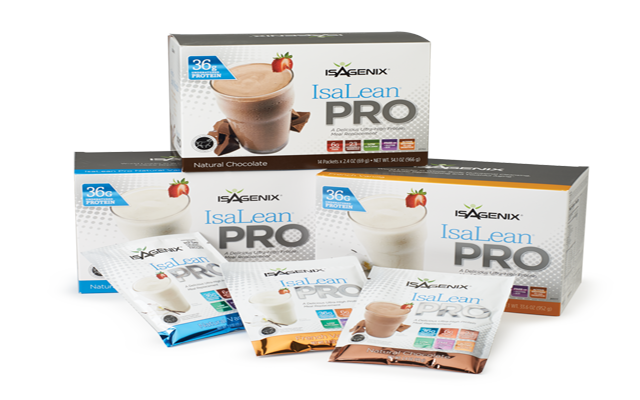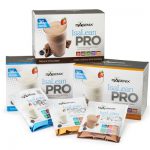When athletes want to gain an edge, they turn to whey. It’s no secret that whey protein is the best form of protein for building and keeping muscle. But athletes aren’t the only ones who could benefit. After all, who doesn’t want a svelte, fit, and healthy body?
Although whey protein is an essential component in the nutritional arsenal of the serious athlete, it should also complement the diet of aging adults. Aging puts people at higher risk for developing certain diseases and ailments. Fortunately, a diet that includes the right kind and amounts of whey protein can be part of the healthy aging solution.
Whey protein helps burn age-related fat
Body fat accumulates as people age. The average person will gain 1 pound of fat every year after the age of 30. Not only is this extra fat unattractive and uncomfortable, its accumulation also poses significant risks to health. Visceral fat, or the fat that surrounds your internal organs, is particularly hazardous and has been linked to insulin resistance, abnormal blood lipids, and cardiovascular disease.
Aging healthfully requires burning excess fat and maintaining a desirable body weight. Eating a diet high in quality whey protein can assist in weight loss and subsequent maintenance by maximizing satiety, boosting fat burning, and increasing metabolism. Whey protein promotes fullness by stimulating gut and appetite hormones to tell the brain that it is satisfied (1). In addition, whey protein can actually rev up metabolism, helping the body burn fat. Whey protein is superior to other protein sources for promoting fat loss and has been shown to increase the body’s fat burning rate more than soy or casein in the hours following a meal (2).
Whey protein helps prevent age-related muscle loss
In addition to accumulating fat with age, people also lose muscle. Muscle becomes progressively more difficult to build and preserve with age. In fact, the average person will lose 1/2 a pound of muscle every year after the age of 30. Luckily, the benefits of whey protein are two-sided, provoking both a greater ability to burn fat while building muscle and preventing breakdown. When it comes to building muscle, whey protein is superior to other protein sources. This is partly due to the type of amino acids making up the protein, which act as the key signal in regulating muscle growth (3).
Muscle is made of protein and is the only form of protein storage in the body. When sufficient protein is not supplied to the body through meals, muscle will begin to breakdown to accommodate the body’s needs. By eating whey protein in regular intervals throughout the day, muscle breakdown can be minimized and muscle mass can be maximized. Maximizing and preserving muscle mass is important for maintaining a healthy metabolism, supporting bone health (4) and mobility, as well as preventing chronic illness. Low muscle mass has been related to conditions such as poor blood sugar control and diabetes (4, 5). The less muscle a person has, the greater their health risks.
Undenatured whey protein fights key components of aging
Oxidative stress is a major cause of biological aging and occurs when the body’s antioxidant systems are overwhelmed by the amount of harmful oxidative agents. These oxidative agents cause damage to cells and are created as a result of environmental, dietary, and psychological stress, as well as from the normal processes of metabolism. Glutathione is an important antioxidant that guards cells from injury that contributes to aging, and whey protein is a potent supplier of the building blocks of glutathione.
The ability of whey protein to boost glutathione synthesis is of particular importance to older people, whose ability to make glutathione decreases with age. By their sixties and seventies, some elderly people have been shown to have glutathione levels 50 percent lower than adults in their twenties and thirties (6). By increasing glutathione levels in older people, whey protein helps fight oxidative stress and delays the progression of cellular aging.
When considering the antioxidant-boosting properties of whey protein, quality counts. There is evidence that the undenatured form of whey is superior to the denatured form. Unlike denatured whey protein, which is broken into individual amino acids, undenatured whey protein is carefully processed so that the natural folds within the protein are maintained. Undenatured whey protein has been shown to have greater antioxidant-boosting and also immune-enhancing abilities than denatured protein (7).
Protein needs are higher in older people
Older adults need more protein than younger adults to support health, functionality, and recovery from illness (8). Older people are less sensitive to protein as the signal for muscle building and more is needed to stimulate muscle growth and to prevent muscle loss (9). Some studies suggest that needs may be as high as 40 grams per meal. Chronic inflammatory conditions and diseases that commonly occur with aging can also increase protein needs (8). It is critical that the right amount of high quality protein is eaten to offset some of the harmful consequences of chronic conditions and to compensate for a diminished anabolic response.
IsaLean Pro meal replacements offer a convenient way to get the right amount of high quality whey protein needed to support optimal health and to fight key components of aging. To maximize muscle reserves and to promote fullness and fat breakdown, it’s necessary to get 20 to 40 grams of protein at each meal. Eating IsaLean Pro along with high protein snacks or meals spaced at regular intervals throughout the day can help you age healthfully.
References
1. Souza GT et al. Dietary whey protein lessens several risk factors for metabolic diseases: a review. Lipids Health Dis. 2012 Jun 7;11(1):67. [Epub ahead of print]
2. Acheson KJ et al. Protein choices targeting thermogenesis and metabolism. Am J Clin Nutr. 2011 Mar;93(3):525-34. Epub 2011 Jan 12.
3. Phillips SM et al. The role of milk- and soy-based protein in support of muscle protein synthesis and muscle protein accretion in young and elderly persons. J Am Coll Nutr. 2009 Aug;28(4):343-54.
4. Wolfe R. The underappreciated role of muscle in health and disease. Am J Clin Nutr. 2006 Sep;84(3):475-82.
5. Srikanthan P, Karlamangla AS. Relative muscle mass is inversely associated with insulin resistance and prediabetes. Findings from the third National Health and Nutrition Examination Survey. J Clin Endocrinol Metab. 2011 Sep;96(9):2898-903. Epub 2011 Jul 21.
6.Sekhar R et al. Deficient synthesis of glutathione underlies oxidative stress in aging can be corrected by dietary cysteine and glycine supplementation. Am J Clni Nutr. 2011; 1-7.
7. Bounous G, Gold P. The biological activity of undenatured dietary whey proteins: role of glutathione. Clin Invest Med. 1991;14:296-309.
6. Bauer J, et al. Evidence-based recommendations for optimal dietary protein intake in older people: a position paper from the PROT-AGE Study Group. J Am Med Dir Assoc. 2013 Aug;14(8):542-59. doi: 10.1016/j.jamda.2013.05.021. Epub 2013 Jul 16.
7. Hulmi JJ et al. Effect of protein/essential amino acids and resistance training on skeletal muscle hypertrophy: A case for whey protein. Nutr Metab (Lond). 2010 Jun 17;7:51.






